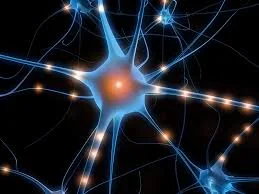Color Therapy And Mood
Ever wonder why you can automatically associate a color to a certain feeling from just looking at it? This is because colors do actually give off a certain “feeling”. They are associated with different mental, physical, and emotional effects on people. Red, for example, can increase heart rate and adrenaline. While some colors have been psychologically proven to influence a change in affect, some may be subjective and can be opened to interpretation and perception between different populations or cultures.
There are three categories of colors: primary, secondary, and tertiary. Primary colors are basic hues that cannot be mixed together to form and all other colors are created from them like red, blue, and yellow. Secondary colors are mixtures of two primary colors such as green, orange, and violet. Tertiary colors are mixtures of both primary and secondary colors, sometimes resulting in two word names like blue-green.
Color symbolism is the use of color as a representation of something specific to a particular culture or society. While there is a general meaning behind every color, some colors can represent something totally different from its general meaning based on a culture. For example, the color white gives a sense of purity, innocence, cleanliness, neutrality and space. However in some cultures, like in hinduism, white also means mourning and is typically worn during cremation and mourning period of a loved one. The color black gives a sense of power, authority, strength and intelligence. But again, it can also mean evil or death and is also worn during a funeral. Yellow provides a positive energy representing happiness and optimism. Sometimes it can also represent hunger and frustration. Green is a natural color that symbolizes growth, prosperity, good health, fertility and harmony but it can also represent envy. The color grey is a neutral color that means practicality and timeless. The color red gives off many emotions. It represents love and roman, but also energy, excitement, intensity and agitation. Orange always gives off an energetic feeling with excitement, warmth, change and prosperity. Blue gives of a calm and serene feeling whose color usually represents cold, wisdom, truth, and focus.
In color therapy, colors are associated with a person’s emotions. It is a holistic healing method that uses light and color to alter a person’s mood or health usually for people with brain disorders or emotional troubles. For example, since the color blue has a calming effect, looking at it can help reduce blood pressure; opposite of the color red. Our auras are represented by different color and intensity, and presenting colors to our environment can help with cleansing and balancing. It is believed that it is the specific frequency and vibration of colors that affect our bodily energies. We know that light enters through our eyes to create images of our physical environment, but it also gets absorbed through our skin. Certain wavelength absorption of light can activate hormones or enzymes in our body to make us feel a certain way. For example, shades of red give off a loving sexual vibration which may activate parasympathetic nervous system and result in increased state of arousal.
The psychological effects of colors are separated into two categories: warm colors which spark emotions ranging from comfort to hostility, and cool colors that spark emotions ranging from calmness to sadness. Some companies even take into consideration color schemes for their interior decoration to give off a sense that will make people need their product. For example, McDonald’s uses yellow because the color yellow increases hunger, making people buy their food.
So maybe next time you decide to repaint your home, it may be of importance to you to consider the mood you want to provide. If you want to create a state of two different moods, you can use secondary colors. For example, purple is a mix of red and blue and can provide a steady balance between stimulation and serenity. Intensity of colors should also be taken into consideration. A light purple, which includes the mixture of color white, can create a more peaceful surrounding, reducing the tension or intensity that can be created by mixing two prominent primary colors.



